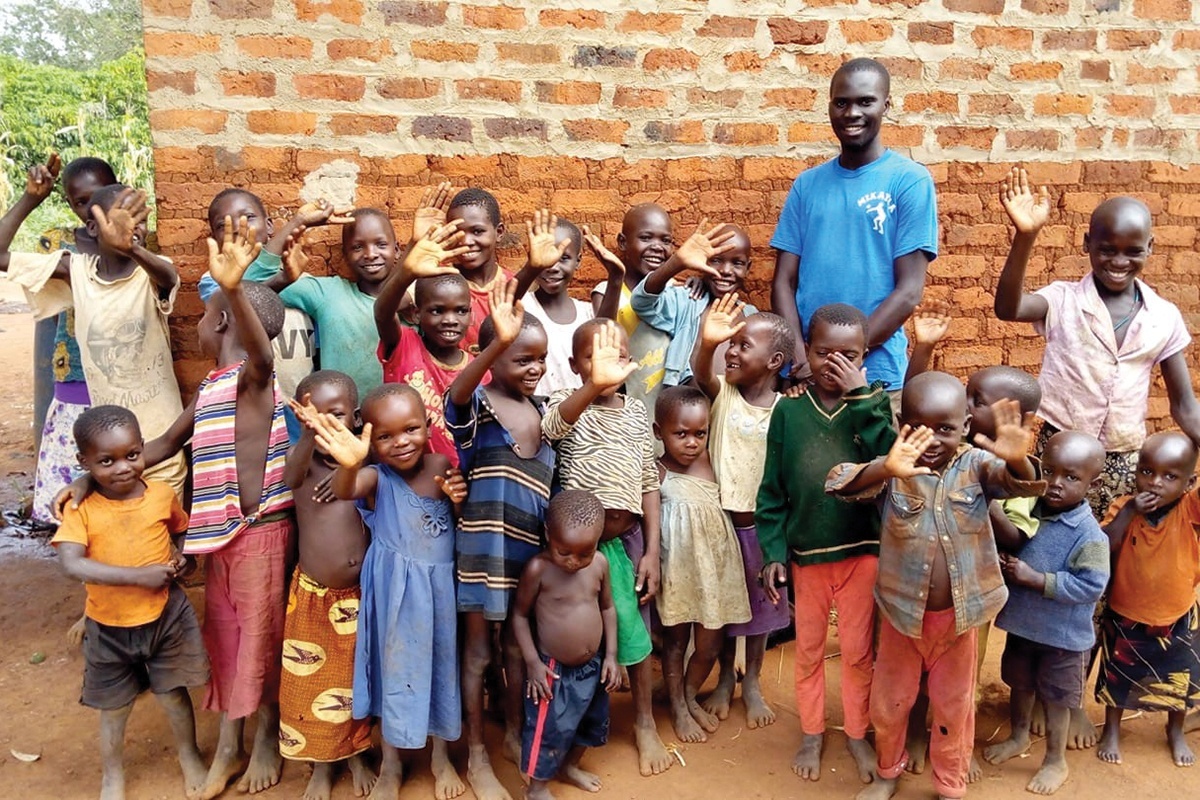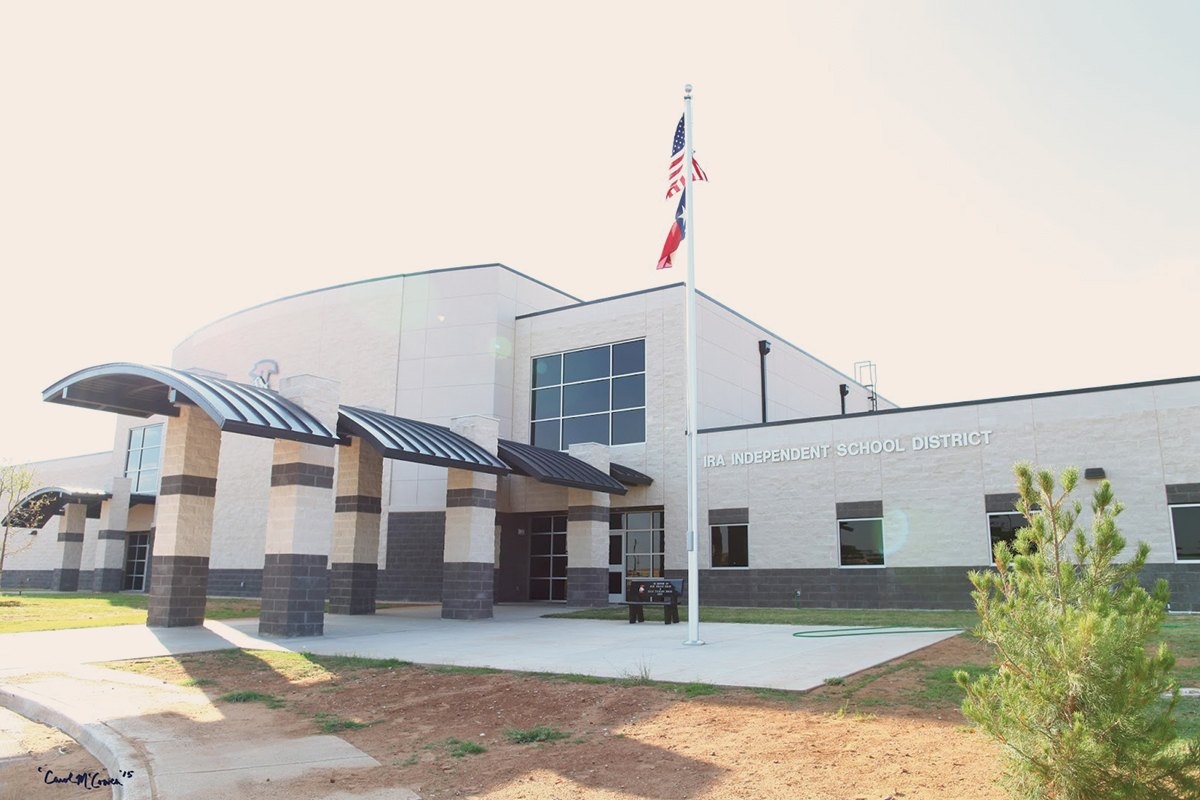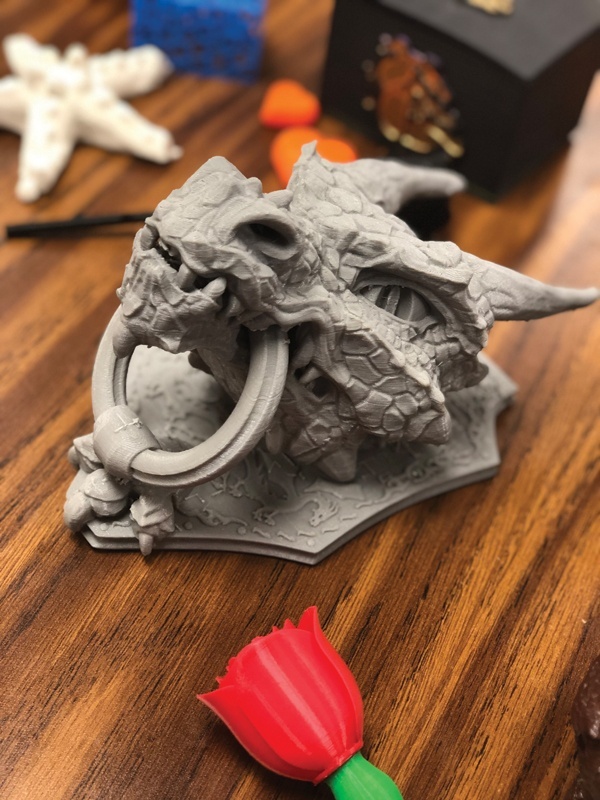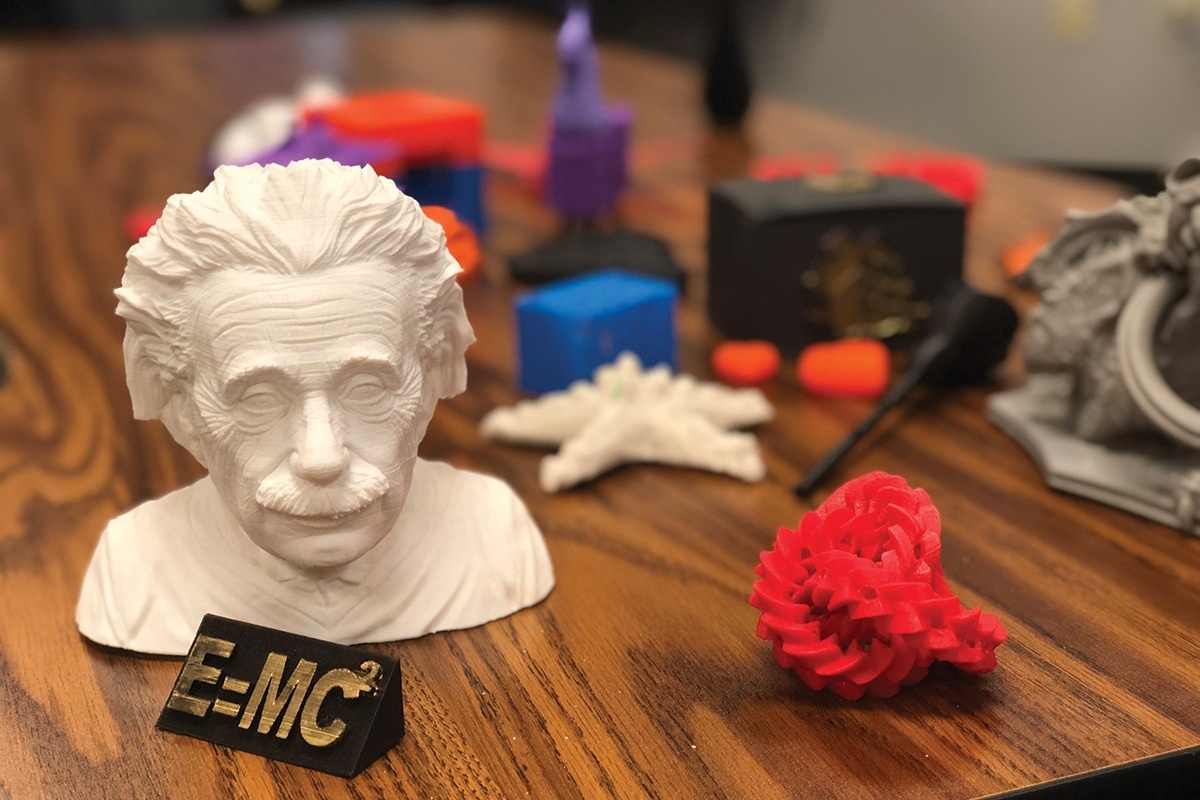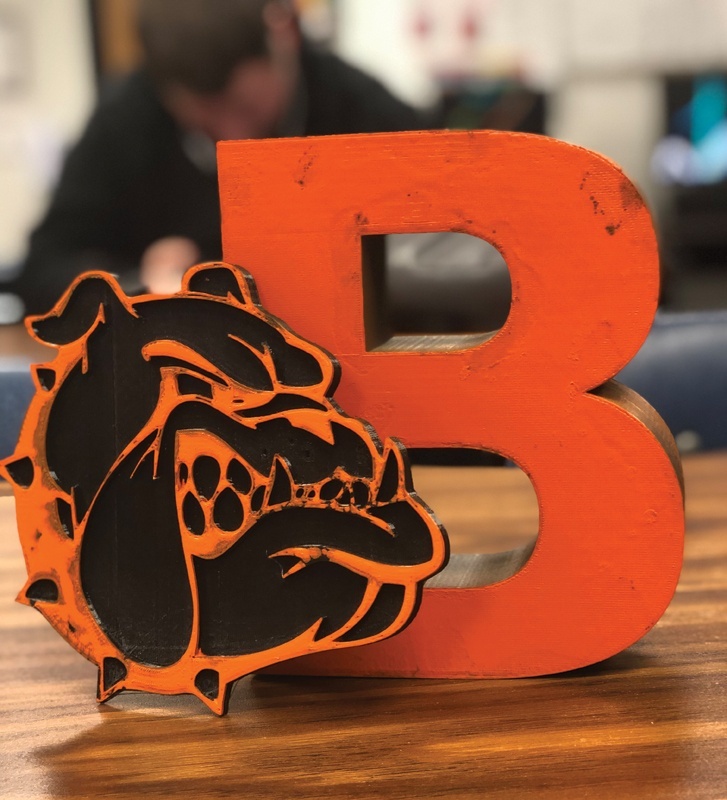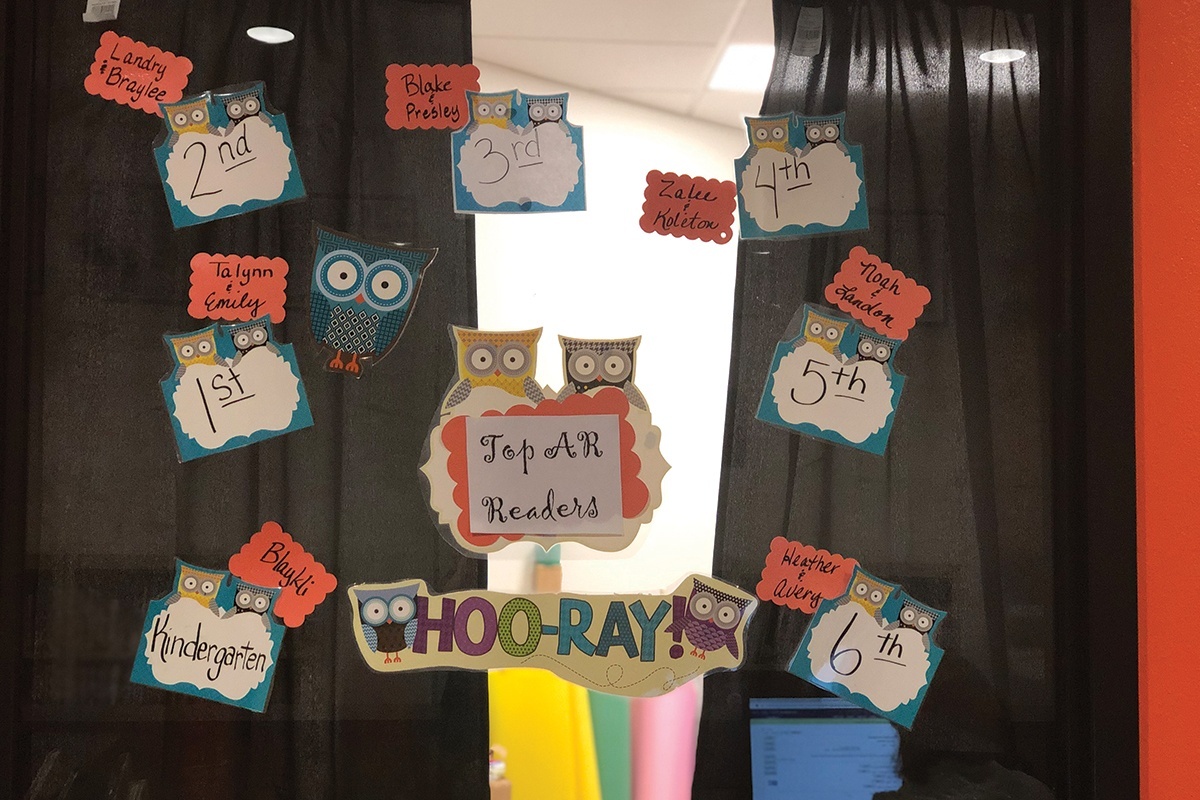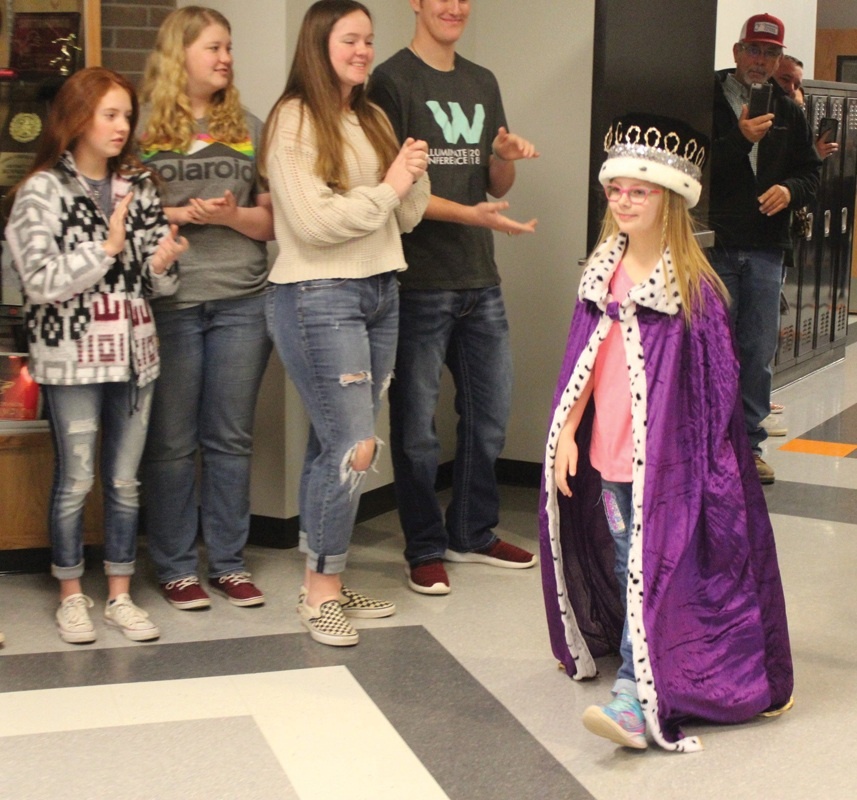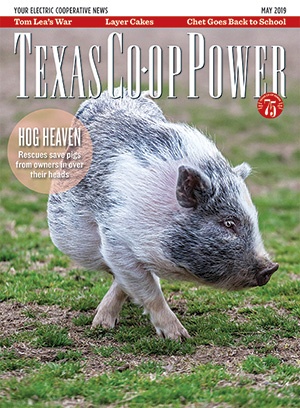Nestled 10 miles southwest of Snyder, just off Highway 350, lies a launchpad for technology. It’s a bit unexpected, situated amongst farmland and oil fields, but what may look like a sleepy little country school is anything but.
Ira Independent School District says its mission is to send students into the world prepared to excel and achieve their goals, in the workforce or at an institute of higher education, with great pride in where they received their K–12 education. Technology is one tool Ira ISD uses to instill knowledge, skills and out-of-the box thinking to achieve this mission.
“One size doesn’t fit all in education anymore,” technology teacher Walt Burt explains. “We have different kids doing different things in the classroom at one time. There is a rule in my class that anyone in class can ask anyone else for help except for me. Their learning is in the struggle. I encourage the students to challenge me, too.”
Junior Kolten Welch says he appreciates the challenge.
“Mr. Burt encourages our creativity,” he says. “He pushes us to think differently. It’s cool to come in here and express ourselves. We make videos, use virtual reality and use the 3D printer.”
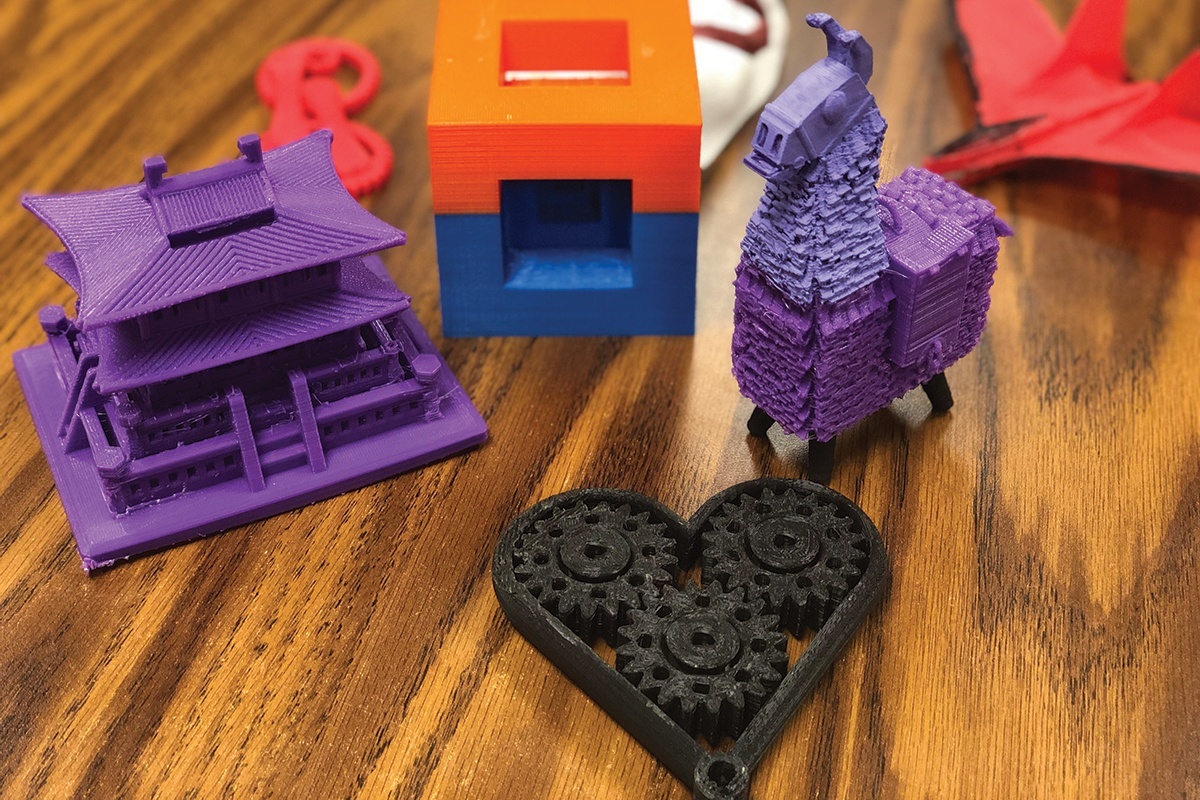
These items were printed in incredible detail using Ira ISD’s 3D design software and printer. The gargoyle door knocker, chain links and heart all have functional moving parts yet are printed as one piece.
While these devices may sound like fun sci-fi toys (and the students and Burt do have fun with them), they are tools that open the door to knowledge, growth and service. Using technology, some Ira students are building relationships across the world as they help others.
The 13 students in Ira’s junior class worked together to make a documentary for the University Interscholastic League Young Filmmakers Festival. Titled Angels Walk Among Us, production of the project began in August 2018, culminating in January with the completion of the seven-minute film. The documentary highlights the plight of babies and very young children who are left orphaned by the AIDS epidemic and the efforts of the Hope for AIDS Orphans charity to care for and educate the children.
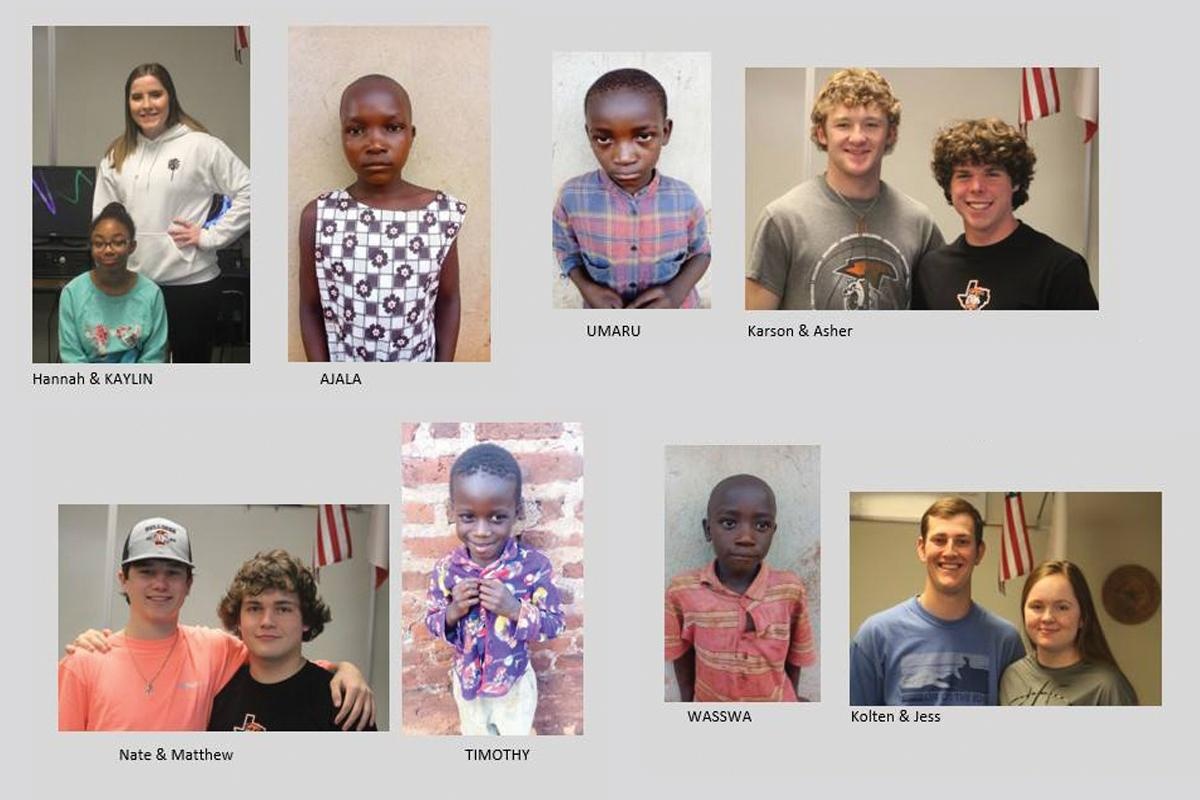
Ira students used their skills and hearts to support the Hope for AIDS Orphans charity in Jinja, Uganda. After their initial project was complete, the students chose to continue support of the charity by hosting fundraisers to sponsor children.
“Imagine being left all alone in the world with no parents as a small child with no food and danger all around,” the documentary begins. While their film did not advance in the competition, the students were not disappointed because the heart of their project was what mattered most to them. The students were so touched by the subject of their film that they hosted a fundraiser, earning $1,200 to sponsor seven Ugandan children, including a little girl named Mariam, who was found in a ditch near starvation after losing both parents to AIDS. The students also gifted a water filter to an orphanage so that clean drinking water could be more readily available.
“The funds our students raised also provided a feast for the orphanage,” Burt says, beaming with pride. “For the people at the orphanage, this feast was the best meal most of them have ever had. A typical meal is little more than what is necessary to stay alive.”
As the documentary and news of it was shared, one reader was inspired to donate $2,500 to the charity. More fundraisers are planned so that sponsorships of Ugandan orphans can continue. The students have been able to exchange videos with children they have sponsored and build loving bonds with them. “Technology has allowed us to form personal relationships with people across the world,” Burt says.
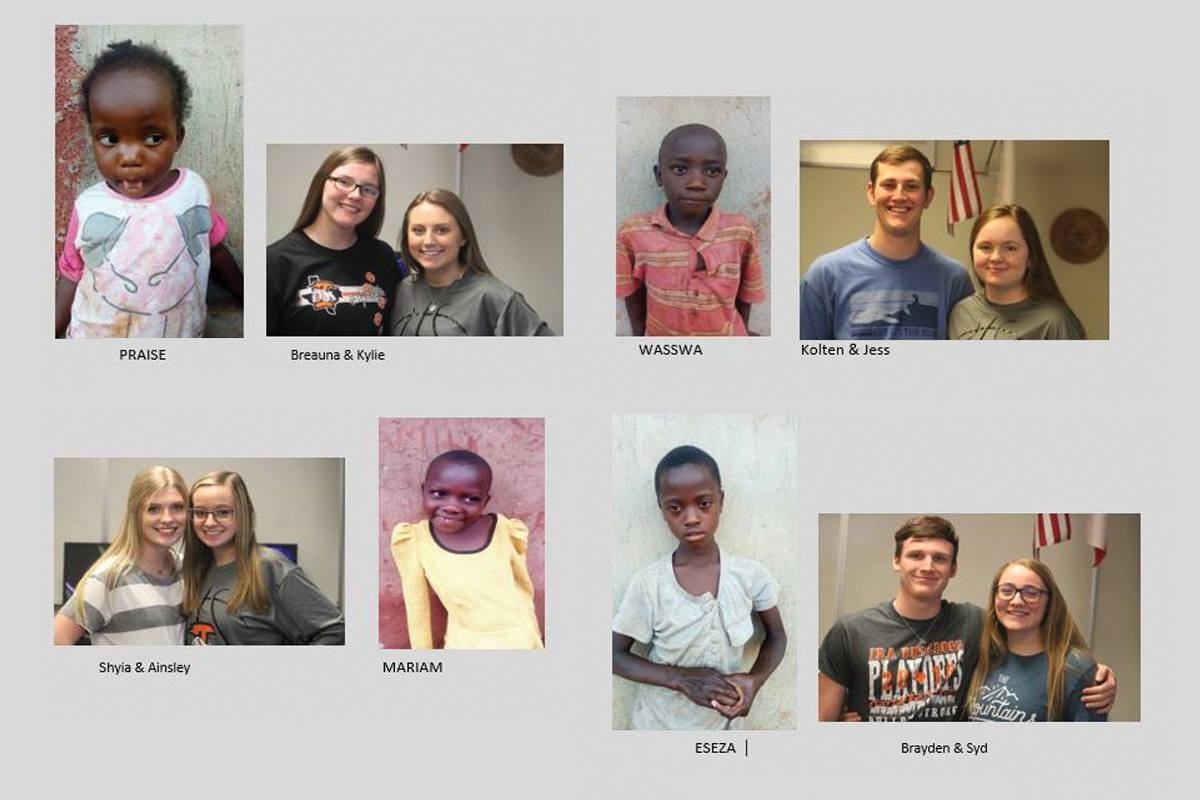
Ira students used their skills and hearts to support the Hope for AIDS Orphans charity in Jinja, Uganda. After their initial project was complete, the students chose to continue support of the charity by hosting fundraisers to sponsor children.
To support the Uganda project, the junior class will soon be directing another video, starring members of the second-grade class, allowing a big brother-big sister relationship to grow from the project as well. The video will be submitted to a contest with a $5,000 prize, which, if won, will be donated to Hope for AIDS Orphans.
This small school is doing big things, going places and making a difference. Over the past three years, Ira technology students have produced public service announcement videos on important topics such as underage drinking, speeding, distracted driving and seatbelt safety, just to name a few. These videos have won contests sponsored by the Texas Department of Transportation and Texas Workforce Commission, receiving prizes ranging from several hundred to several thousand dollars, which the school has invested in furthering its technology program.
Grace Highfield, an Ira senior, directed a video that won $2,000 last year and the $10,000 grand prize this year in a nationwide Powerade contest to “Power Your School” by helping student athletes. Even though the school has a new educational facility, its athletic facilities and weightlifting room—the subjects of Highfield’s videos—need improvements, so the prize money was welcomed and will be put to good use.
“Our school administration has been great to allow us to try new things,” Burt says. “We have a limited budget, but that doesn’t stop us. Most of our newer computers were purchased with prize money, which teaches the kids that even though we don’t have a lot of money, we can still do new, innovative things.”
In Ira, the concept of trying new things with film is not restricted to high school students.
A group of junior high students recently finished a video for a contest sponsored by the Texas Association of School Boards. The only West Texas school to compete, Ira is competing against many larger schools for a $5,000 prize. As of press time, the group knows they are one of nine finalists, anxiously awaiting the final results. “They have spent lots of hours getting the sound and transitions just right so that the video looks professional,” Burt says. Anzlee Hill, an eighth grader who was part of the project, said, “We’re a small school, so it’s cool we have the things we have and to get to show what we can do.”
Burt says he’s proud of what the students have achieved.
“We have a lot of deep discussions in our classes,” he says. “These kids are being taught to learn, unlearn and relearn. 3D design helps them do that. Typical dimensions are length, width and height, but we had an eighth grader who built a cube based on Einstein’s theory of special relativity, or the fourth dimension, which is a cube within a cube infinitely.”
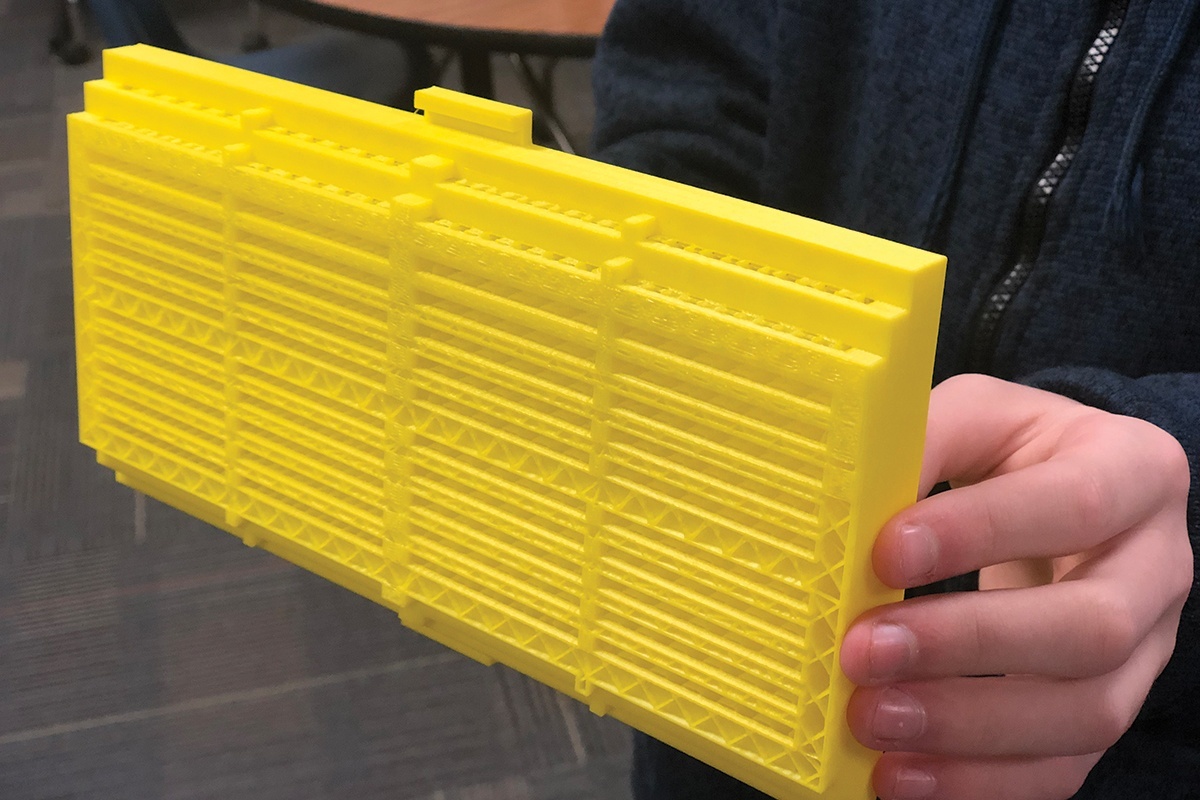
When a heat vent in the classroom projector broke, an eighth-grade student accepted the challenge to make a replacement piece using the 3D printer.
One student built a replacement vent for the classroom digital projector using 3D design software and the 3D printer. “I calculated every point for the heat using the measurements of the projector and designed it within the software,” the student says. “I love being creative and building things. It gives me a challenge. I want to be an architect.”
3D printing is also a hit among the younger Ira Bulldogs, who can earn 3D-printed figures and toys as accelerated reader prizes when they hit reading goals, librarian Keva Fowlkes explains. While there is certainly a big push for technology, reading is still the foundation of a good education, and victories in reading are celebrated at Ira. “We have a big parade for each student when they reach 1 million words read,” Fowlkes says. “The cheerleaders lead them through the school wearing a crown and cape, and they get a special dessert that day. It’s a big deal! We also give special incentives for the class to accumulate points as a group.”
Complementary to the school’s achievements in the technology realm, their academic teams are increasingly successful, too. Beginning in elementary classes, students are taught to play chess to boost their math performance and test scores as well as critical thinking skills. The students get chess time—occasionally challenging older students—as a reward.
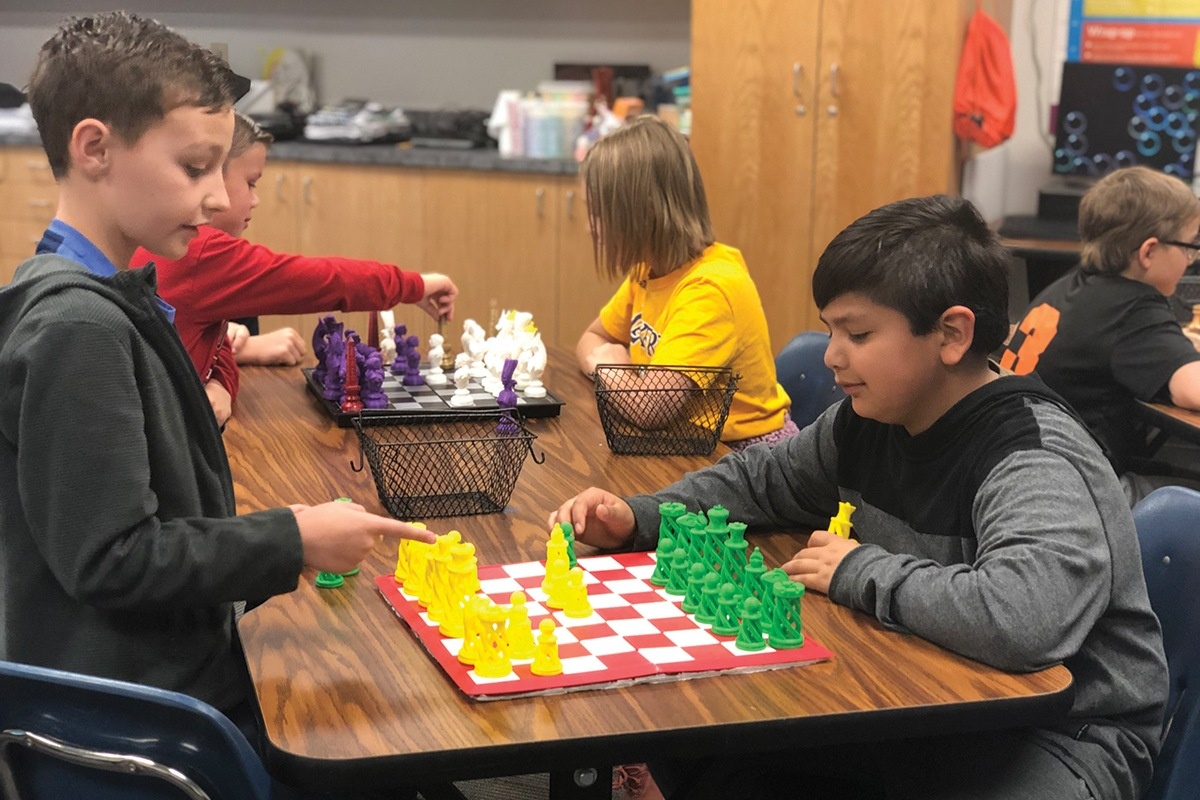
Chess is taught at Ira beginning in elementary school to improve math and critical thinking skills. Chess-playing time is also used as a reward for good behavior or performance.
The computer science team, composed only of freshmen, recently won a district title in a contest that Burt describes as “one of the hardest academic disciplines—it’s very technical. They have to do a lot of coding, which is its own language. These guys started off asking, ‘Why do we have to do this?’ but earned a coding proficiency certificate in the eighth grade.”
The saying goes that seeing is believing, but even seeing these students’ accomplishments, I was in awe of their abilities and the great potential that lies within them. “Keeping up with technology is important,” Burt says. “The skills needed in the coming years aren’t the skills of yesterday. Skill sets are changing, but good communication skills remain imperative, especially when working with the public.”
With only two years of competition under their belt, an Ira team won a district cross-examination debate title and went to state. “We didn’t win, but we got there!” Burt says, laughing, proud of the kids’ accomplishment in such a short period of time. Welch, a debater on the team, says this year’s topic was “Should the U.S. reduce restrictions on legal immigration?”
“Researching that topic really opened my eyes to different perspectives,” Welch says, “and the experiences of people who are victims of genocide for no reason whatsoever.”
Ira’s students have been busy.
“Sometimes in education, we confuse activity with productivity,” Burt says, but their productivity is undeniable.
These kids aren’t just busy, they are productive in school and will make a difference in the world. Whether in their technical acumen, a mean chess blitzkrieg, college, or job preparation and performance, these kids have the skills to make their mark, thanks to their little school that dares to do big things.
To learn more about Hope for AIDS Orphans, visit hopeforaidsorphans.org/hope.
To keep up with the Ira ISD students’ success, follow the Ira ISD Counseling Office on Facebook at facebook.com/iraisdcounselor.
